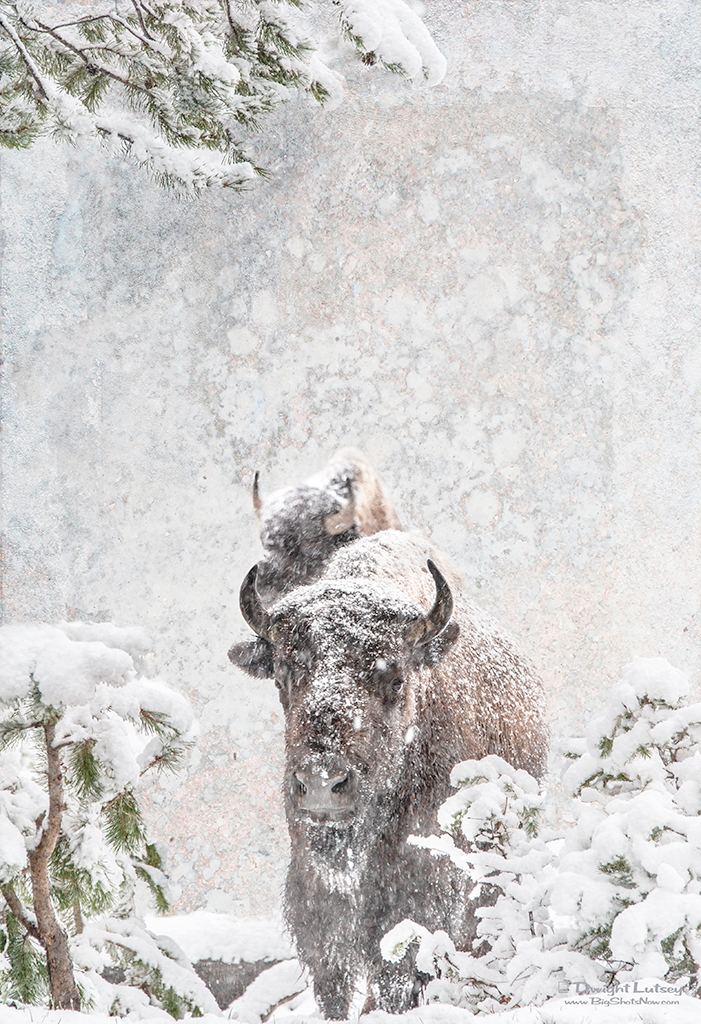
Is this 2021? We have been busting hump to get here. You’re sure it’s 2021 and not last year. We couldn’t take it if this wasn’t 2021. OK then, good.
Now where’s all this extra hay we’re supposed to get?

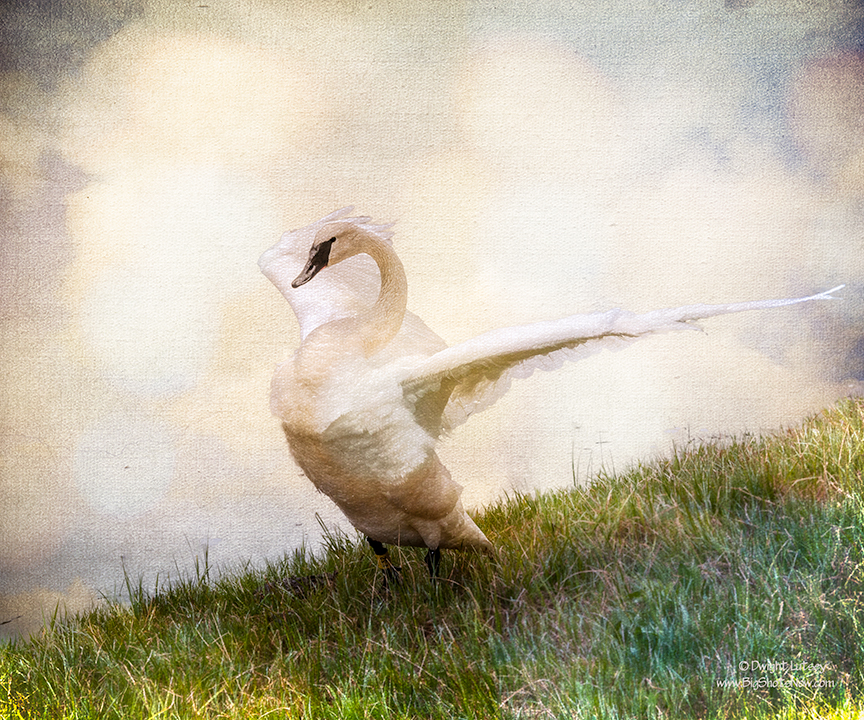
There are portions of the Firehole river that race down from its confluence with the Madison and Gibbon rivers to tumble over the Firehole falls and through the Firehole canyon. At this point it’s a boisterous, tumultuous river, roaring with exuberance as it crashes over rocks, slams around high walled bends in the canyon, and sends its white frothed waters dancing into the air. Finally it makes its way through the Firehole Cascades and begins to widen and slow down and rest for awhile.
As it enters the Fountain Flats area very near the Mount Mary/Nez Perce trail it becomes an entirely different river. It’s wider, slower, often attaining a mirror like surface reflecting the pines that line its banks, with nothing to break its surface but the occasional trout rising to take a Stonefly or White Miller Caddis. Osprey take advantage of its crystal clarity to swoop down and grab its daily meal sending widening ripples outward until gradually the river returns to its quiet flow.
It is here that a pair of Trumpeter swans took residence one late spring choosing this quiet stretch of river to mate and feed and make it their home, at least for the summer. They slowly cruised up and down the still waters, gently feeding along the banks and seining the river bottom with their large webbed feet to bring the insects and other choice bits to the surface.One warm summer day the breezes that blew up and down the river causing ripples and swirls and little wavelets to spread across the river’s surface, disturbing its normal mirror like surface, found one of the swans standing on the bank. It wasn’t a strong breeze but it was enough to stir something in the swan. A memory of past flights perhaps, or a reminder of changes to come, it called to the swan and it spread its wings and raised itself high to catch every delicious bit of the breeze ruffling its feathers. Most likely reminding it of the journey it and its mate would soon be taking as the summer wind changed to fall. The call to them to begin that journey to their winter home too strong to ignore. That will come later, for now it can bask in the sun and take delight in the wonder and warmth of the summer wind.
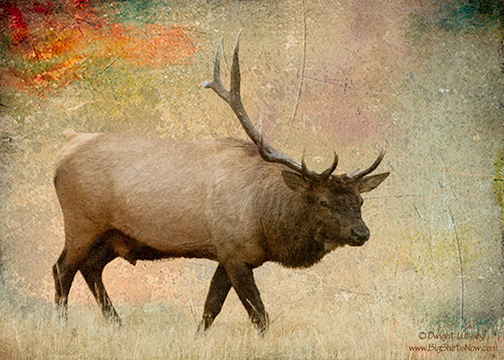
In any sport one has to have the right equipment and keep that equipment in tip top shape. If you’re a pole vaulter and you use a flimsy made in a third world country pole, and it snaps when you’re making your best run at the Tokyo Olympics you’re not going to get a medal. If you’re a shot putter and your shot is made of Unliftanium from one of the Baltic countries and you can’t even lift if off the ground let alone heave it anywhere, you’re going to look dumb and be laughed at by those with better equipment. This is important in the game of life.
What you see above is a contestant in the annual “Rut” or how you get babes in the Elk world, held every year to decide the mating rights among these large and very belligerent ungulates. As you have no doubt seen on any of the nature shows these male Elk fight with each other to claim and acquire the most cow elk in their harems. Because they’re big and strong and have large, but huge antlers, the cow elk desire to be obtained by the largest and strongest bull. Thus making him the winner. However many battles need to be fought and the tides of victory and cow elk accumulation ebb and flow throughout the season.
One thing remains constant however and that is they must maintain their equipment in perfect order. In this case this poor fellow had a disastrous mishap that cost him his left antler. He went in to a contest with another bull who snapped it right off during the attack, thus ending the battle, his opponents ability to proceed in the contest, and his chances of getting lucky in the mating game. It is unknown if the substandard equipment was a poor choice by the contestant, a genetic failure, or why the antler failed. Maybe it was just nature’s way of saying “Nope, you’re done. No cows for you.” In any case no other bull would fight with him. It was the Bull Code where the bulls would only fight another bull that was as big and strong enough as they were so that a win would impress the cows.
The moral of this story is if you want to win keep your antlers in good shape. Don’t be losing one or it’s game over. Maybe next year will be better for this guy.
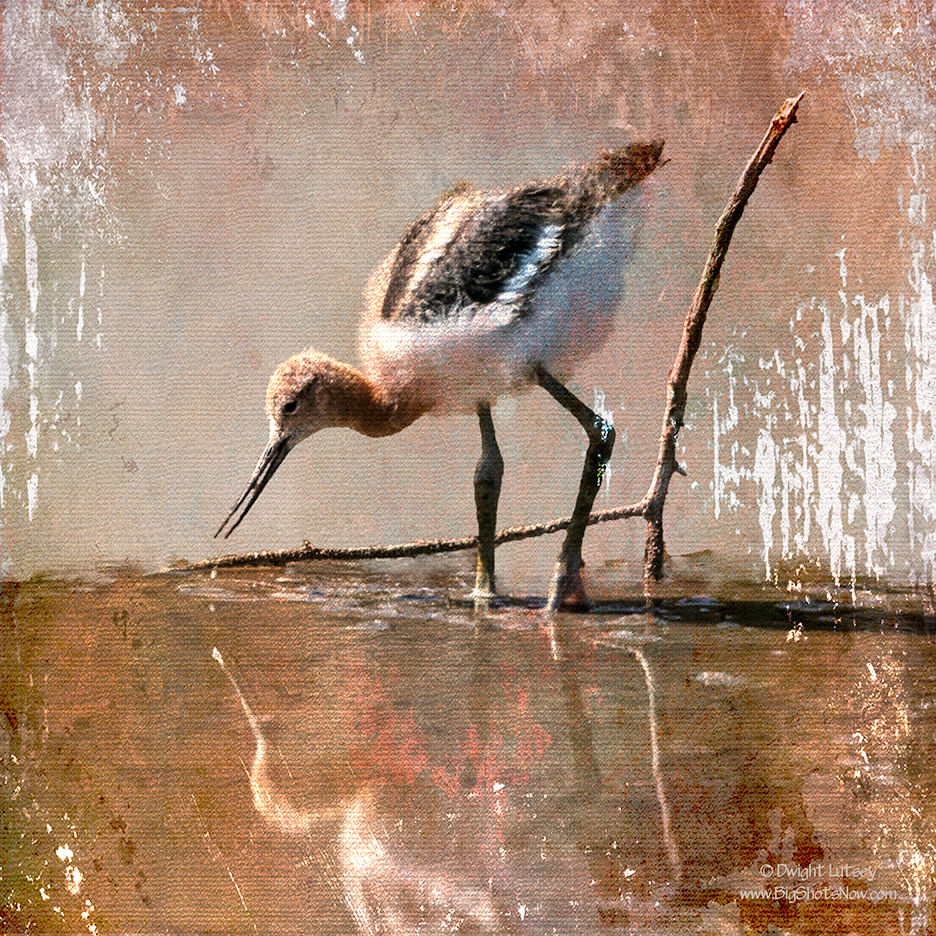
Birding is one if those things people do to get outside and commune with nature where many of the wild birds live. Their sole purpose is to look at those birds and say “I saw you, now I can go home and have a beer.” They make a list of all the different kinds of birds they’ve seen over the years and write them down in a little book, which is called their ‘Life List’. This is shown to other birders and gets them Street Cred in the “I saw a bird and you didn’t” world of birding.
This is not a sport for the uneducated. You can’t be stone cold dumb and be a birder. Many birders have attended highly prestigious places of edification where they don’t necessarily teach birding per se, but they do teach Latin which is used to name and classify bird species and confuse non Latin speakers. This makes the Latin user appear to be much brighter than the poor unwashed non Latin speaker and maintains the guild system that we Americans seem to love so much. It also keeps the rif-raf where they belong and the superior, well, superior. This system is primarily human based as the birds themselves couldn’t give a flying fig about what people call them. Except for peacocks, they are so vain.
One of the burning questions in the birding world is where to go to see birds. Where do they live? Are they accessible to Americans? Does one have to quarantine before looking at a bird? Can you see a bird if you don’t know its Latin name? What do they eat? Are they carnivorous? Do they favor the various root vegetables such as Rutabaga or Turnips? We know they don’t like Parsnips, nobody likes parsnips. These are just a few of the questions asked by people who don’t know any better but want to know so they can move up in the birding world.
One of the places where you can go and look at a bird is one of the various wildlife refuges. This is land that the government has deemed to be of absolutely no other use and therefore suitable to warehouse our excessive bird inventory. Species like those little brown birds you see pecking at everything everywhere. They’re all over the place. You’ve probably tripped over them. It’s very likely they have a Latin name of some sort but who knows what it is. Even if you heard it you wouldn’t know what it meant so one can safely discount and ignore them and go on to look at more interesting birds.
Bear River Migratory Bird Refuge near Brigham City, Utah is one of those holding pens where excess birds are held until they’re needed elsewhere. There you can see huge quantities of birds. They have them stacked all over the place. There are whole fields of those little brown birds spoken of before, which has been learned are actually a house sparrow or the Latin named Passer domesticus. There are great huge lumps of the White Faced Ibis piled willy nilly in unsightly stacks anywhere it’s wet. There you can select an assortment of birds for your own migratory bird refuge, if you have one. Way in the back of the refuge where it’s quieter, is an enormous area filled with lockers where larger birds such as the Tundra Swan are kept until it’s time to cut them loose and send them on up to the Tundra where apparently they are desperately needed at different times of the year.
One of the all time favorites for birders is the American Avocet. The image above is of a young Avocet or chick as they’re more vulgarly known. They look surprisingly like an adult Avocet only smaller. Its bill or beak has yet to grow into the graceful recurve that it uses to sweep through and syphon the water for its favorite food, the Rattle-back Shinsnuggler larvae which is only found here at the Bear River Migratory bird refuge. At least it is believed to be the Rattle-back Shinsnuggler larvae. There were no explanatory signs to indicate what the food is so an assumption was made which is believed to be close to what ever it is that the young Avocet or Chick is eating.
If you are interested in ‘Birding’ or its companion sport ‘Snake-ing’ you can contact any sporting goods store where they’ll sell you everything you might possibly need in the way of birding equipment. They also might tell you where to see birds but I wouldn’t count on that. However you already know where to go as you have just been told right here. It’s the Bear River Migratory bird refuge. So, Happy Birding then, and look down occasionally, that’s where the snakes are.
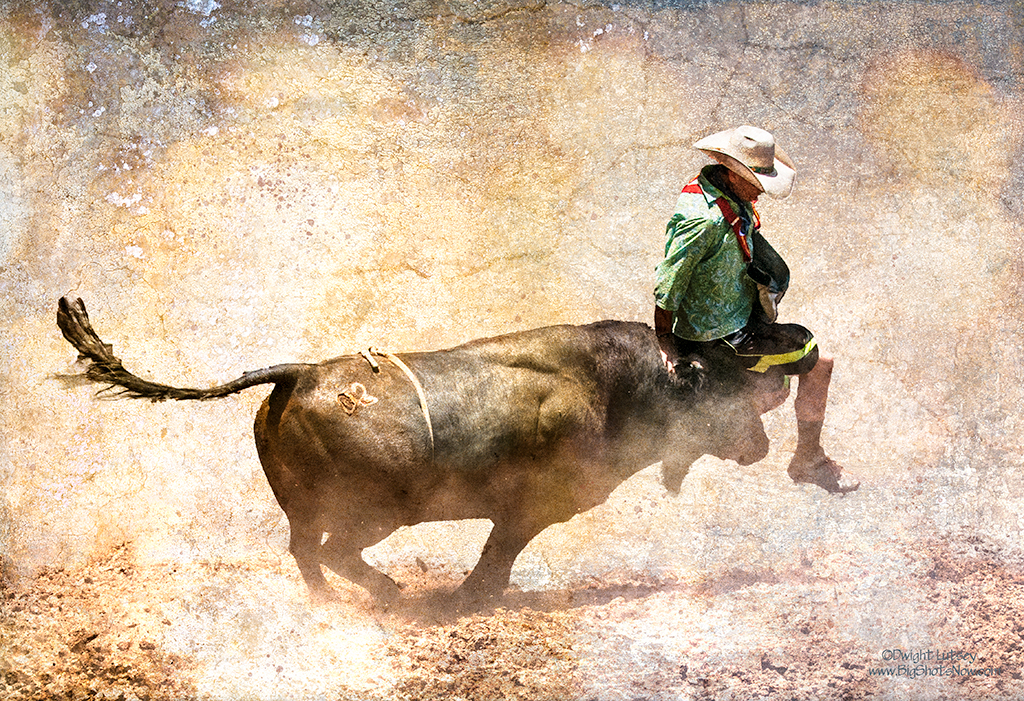
In the past we here at BigShotsNow.com have tried to bring you the newest, most up to date information about all things rodeo. We have told you about guys and sometimes girls that get on bucking broncos and try not to get bucked off. We’ve told you about great big guys that jump on little calves from their horses and wrestle them to the ground just to show they can. We’ve showed you pert but sassy cowgirls that race barrels for fun and profit, and even though the barrels don’t move, they, the pert and sassy cowgirls, win. We have even covered the occasional event where bulls, great big ferocious ones, are ridden by cowboys who have nothing better to do but test their major medical coverage.
But where we excel and you can ask anybody about this, is bringing you the newest most up to the minute news about new events in the competitive rodeo world. We’re talking brand new never before seen events that are changing the very face of todays rodeo.
Bull Steering is one of the newest events and by gad it’s a doozy. In fact, it is the newest event to try and interject some liveliness back into the old boring rodeo your grandma went to. It’s new! It’s exciting! It has the tantalizing elements of skill, danger, and uniqueness unseen until now! It is in fact, unbelievable. Plus it’s simple so neither the cowboys or the bulls need to be retrained to perform in this event. They can get together and just do it. Essentially it’s similar to bull riding but instead of getting on the bull’s back and hanging on while the bull tries to snap the cowboys head off, or he makes it to 8 seconds and completes the ride, the cowboy instead mounts and sits on top of the bull’s head as seen in the image above and grasping it’s horns rigidly but tightly, steers the bull around the arena by twisting, pushing and pulling on those horns causing the bull to trace out or walk through intricate patterns on the arena floor. Figures such as a simple circle, or perhaps a figure eight, or for those going for the big bucks, tracing the Texas star in the middle of the arena. This must all be done by the gentle nudging of the bull’s horns by the cowboy to direct the bull in the necessary direction to complete the pattern. Of course as in all rodeo events sometimes the bull doesn’t want to do it. Just says no and refuses. After all he doesn’t have to be there and due to his belligerent nature won’t participate. That ‘s when the rider needs to use all of his persuasive powers to crank those horns around and make that bull perform. Unlike the 8 second limit in the conventional bull riding event the rider and his bull have 15 minutes to complete a pattern to qualify. If the rider is thrown before that time limit, or the bull doesn’t execute a complete recognizable pattern then they are disqualified. Points are given according to the complexity of the pattern, quickness of completion, the congenial attitude or lack of it by the bull, and the cowboys ability not to faceplant in front of the bull and get stepped on, thereby disqualifying them both.
This event, “Bull Steering”, has never been seen yet in a PRCA rodeo or even some of the lesser known ones like Cheyenne Days or the Calgary Stampede. We found it at one of the smaller independent rodeos, “Stan and Molly’s Fudge Festival and Rodeo Day in Kerseyville, Nebraska. This wasn’t the biggest rodeo we’ve attended and the prize money was dependent on how much fudge Mary sold but it was a good one. Mary was nice, Stan could have been a little nicer but as he only had the one bull and he had to turn it around and get it ready for the next contestant all day long, he could be forgiven for being a little surly.
As always we try and present the newest things happening in the rodeo world before anyone else gloms on to it and spoils it by telling the truth and that’s just what we’ve done today. Here are a few of the other rodeo stories we were first on reporting. If you want to be ahead of your time and are on any of the major rodeo boards that schedule new events please contact us for leasing information. We represent Stan and Molly, well actually Molly as Stan is pretty hard to deal with. We believe this is an event the public should see.
http://www.bigshotsnow.com/horse-spinning
http://www.bigshotsnow.com/whoa-legless-bronco-busting/
http://www.bigshotsnow.com/dancing-with-the-bulls/
http://www.bigshotsnow.com/hang-time/.
http://www.bigshotsnow.com/sweet-nothings/
http://www.bigshotsnow.com/bull-riding-not-aways-a-love-story/
http://www.bigshotsnow.com/3-ways-to-get-a-bull-to-do-what-you-want/
http://www.bigshotsnow.com/the-mediator/
http://www.bigshotsnow.com/back-to-the-classics/
http://www.bigshotsnow.com/so-much-havoc-so-little-time/
http://www.bigshotsnow.com/red-chaps-in-the-sunset/
http://www.bigshotsnow.com/leaps-and-bounds-bull-riding-at-crow-fair-2018/
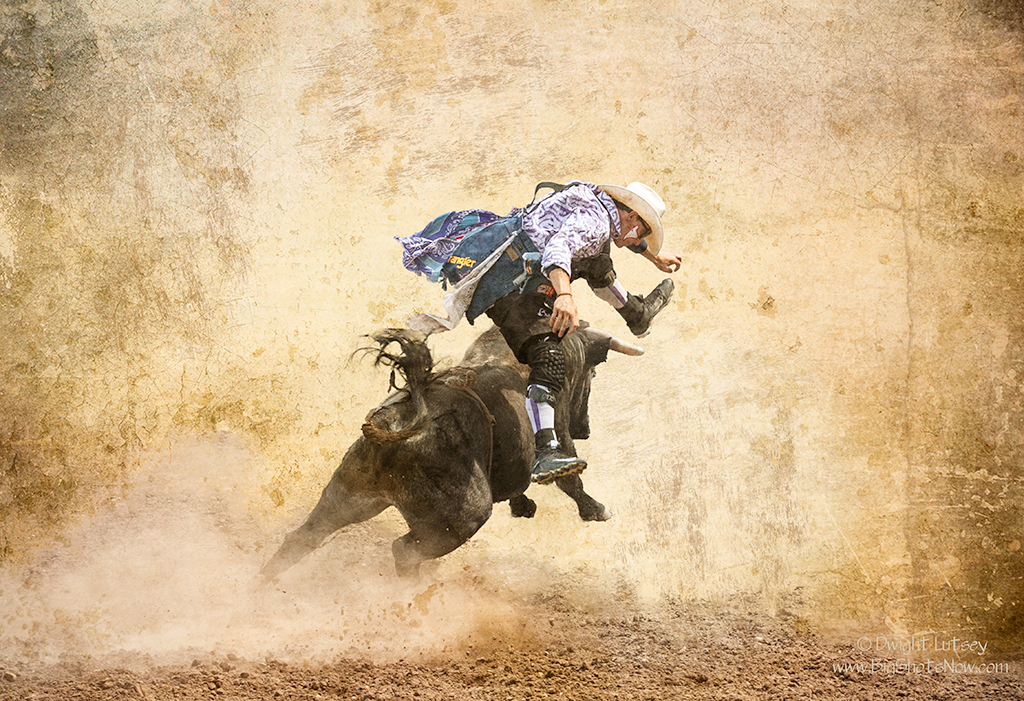
There is a phrase used fairly often, though not as much as it used to be, called Jumping the Shark. It loosely means something that was very popular and trendy that is now losing its popularity and beginning to fade away. TV shows that were ground breaking in some way, sensational due to their unusual and surprisingly defiant approach to current norms, now are becoming stale and outdated. The exact point where the decline started is where they jumped the shark and became irrelevant.
What we have here is a new phrase born out of the rodeo community, Jumping The Bull, which is the exact opposite of Jumping The Shark in every way. When you Jump the Bull you are doing something that is so extraordinary there is no chance that it will become dated or boring. You can watch that over and over and not get tired of it. When a two thousand pound ferocious and dangerous animal runs by you and you decide to jump over it knowing full well what the catastrophic consequences are if you screw it up, that’s Jumping The Bull.
The participants in this event are one of the rodeo clowns and his angry companion, an American fighting bull. Having just ejected his original rider and still filled with the blood lust of the battle, wanting nothing more than to destroy anyone near it, the bull races around the arena looking for anyone to vent its fury on, especially the fallen rider. It’s the rodeo clown’s job to keep it distracted while the original rider gets to safety. In this case the rodeo clown felt there was nothing left to do to get the animals attention but to jump over it. That may sound like the least likely approach to handle the situation but then this is not your normal situation. Anything goes in a deal like this. So the message here can be if you find yourself in a similar situation of being in a hot dusty arena with a maddened two thousand pound fighting bull charging down on you, well, simply jump over it and go get a coffee. It worked for this guy.
You must be logged in to post a comment.